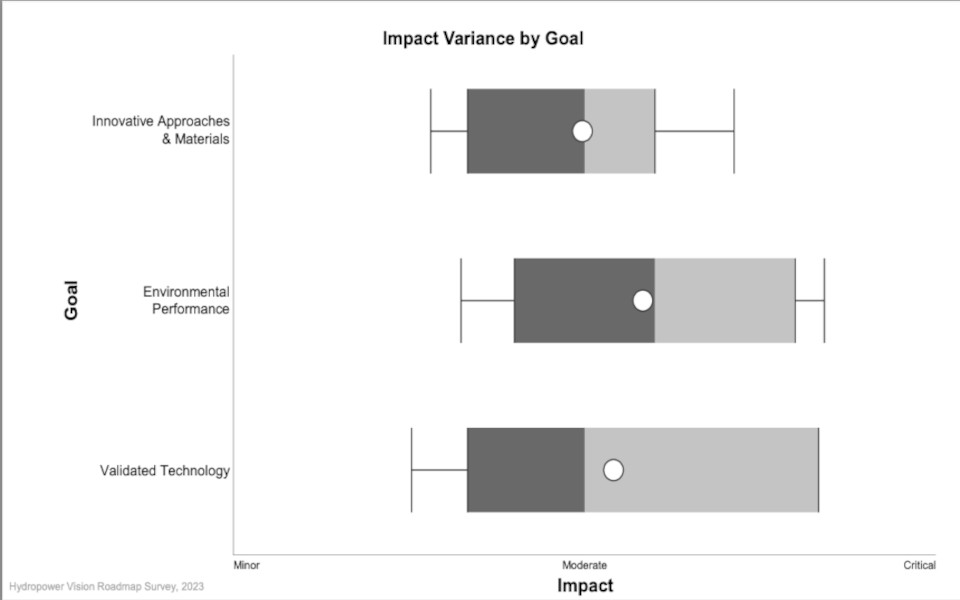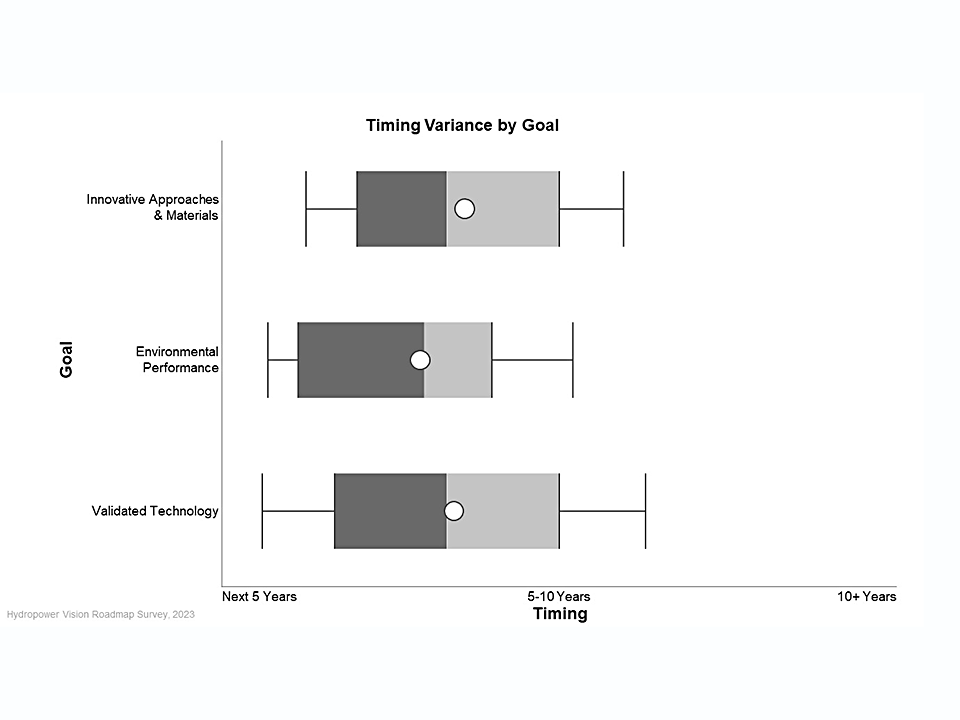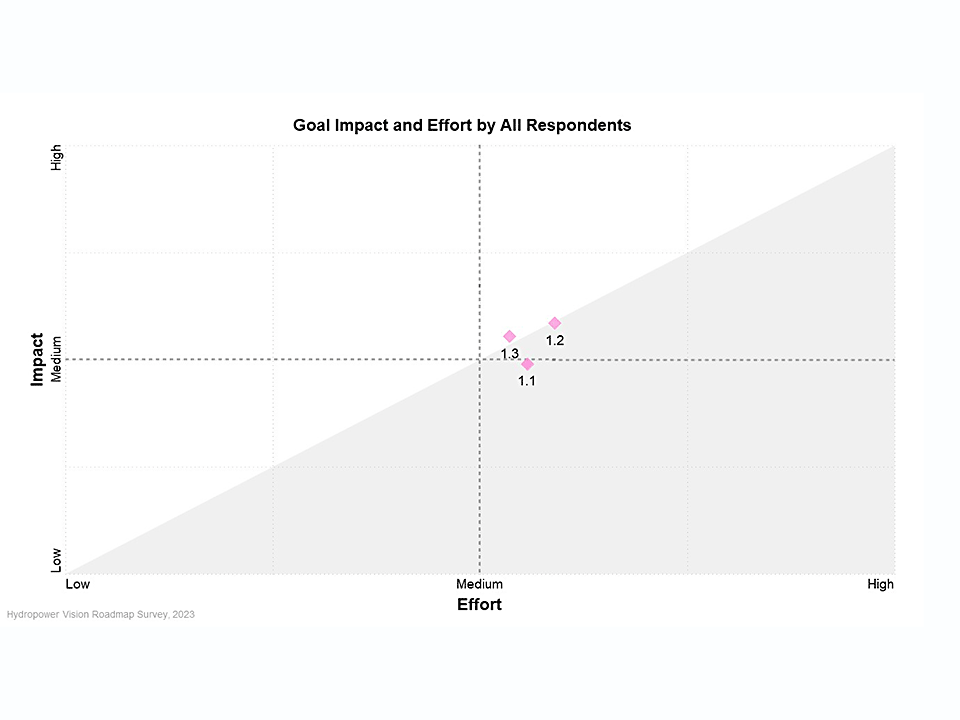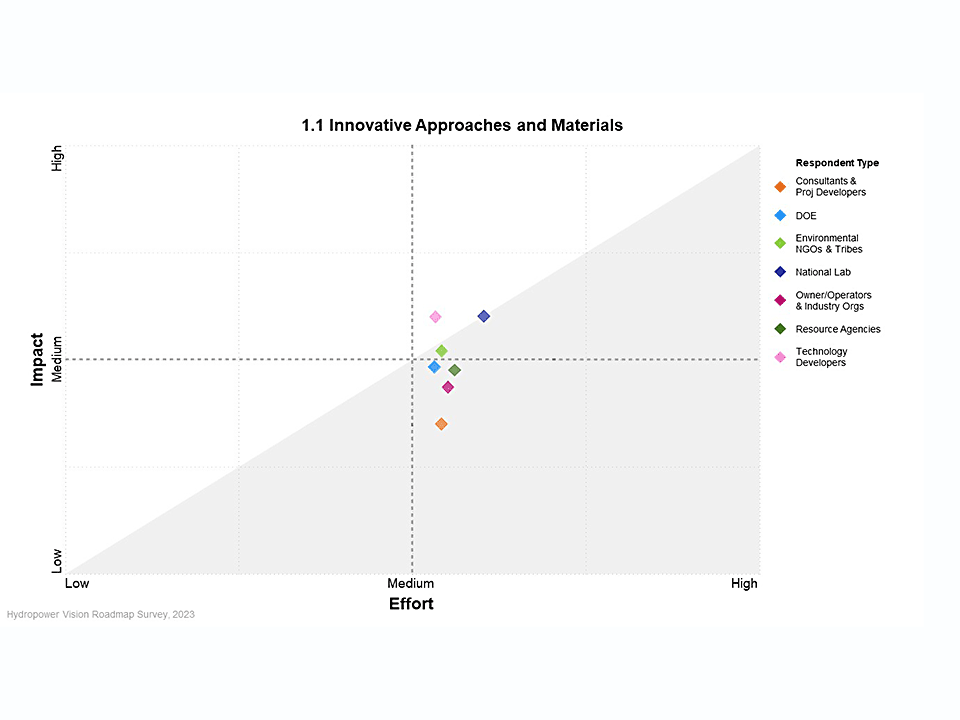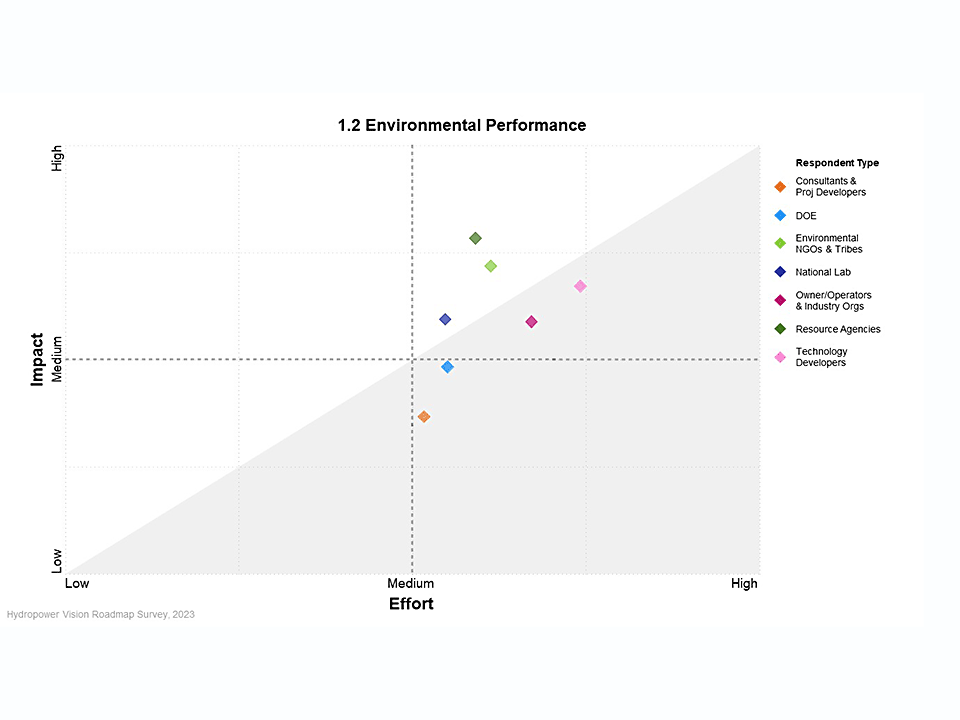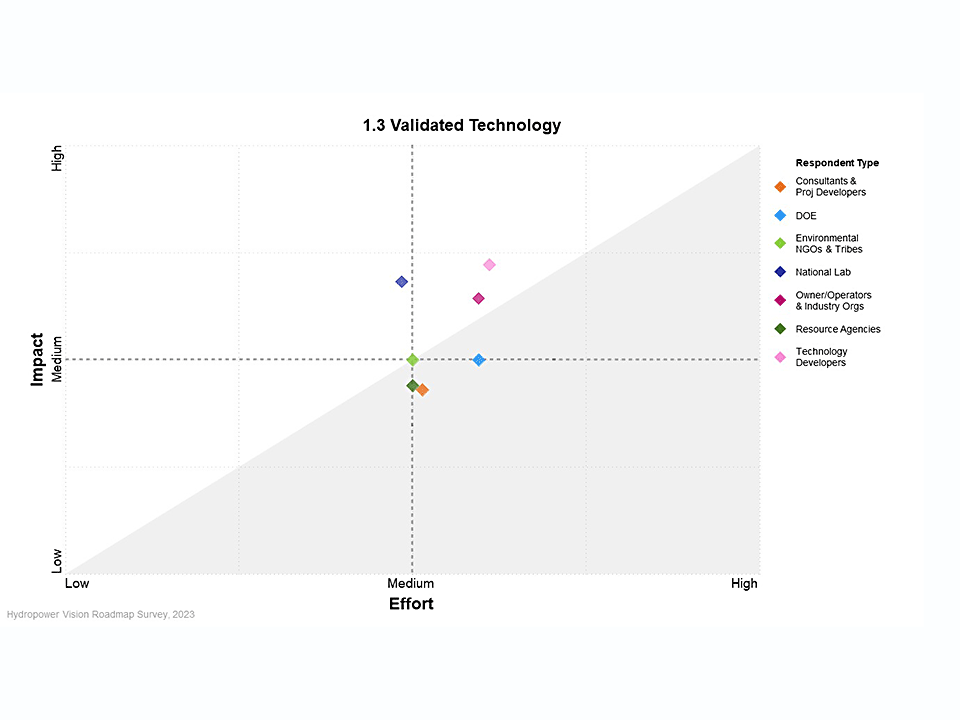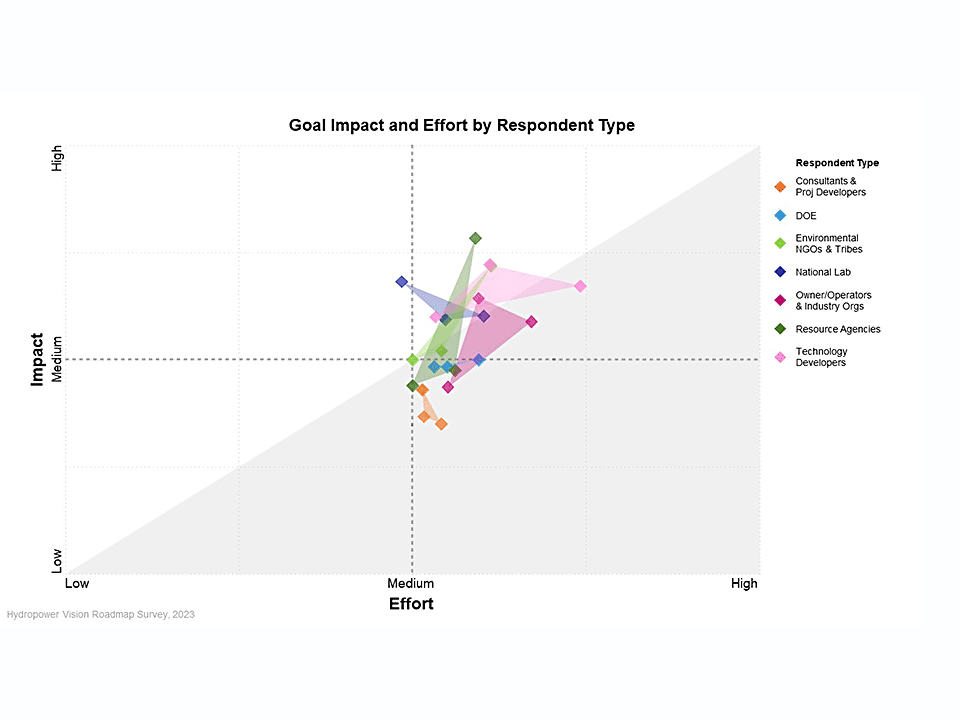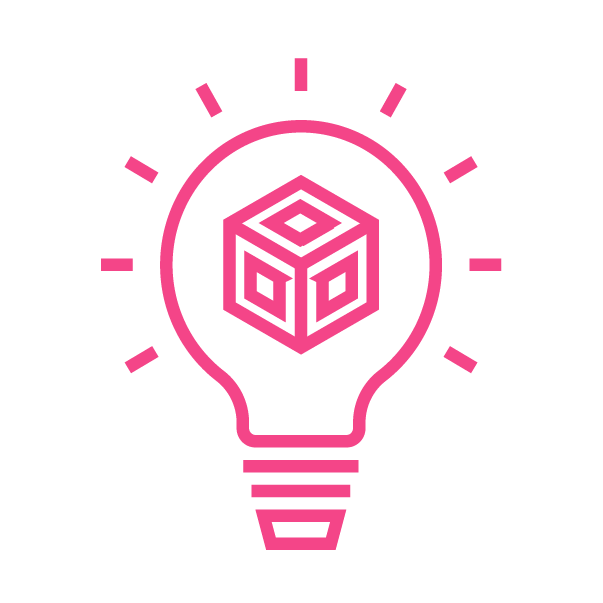 Hydropower is an enduring source of flexible, reliable, and renewable energy generation. As the energy landscape changes, the hydropower community has a responsibility to improve and advance technology through innovative and resilient solutions that address emerging environmental, social, and economic demands. To address this responsibility, the Advanced Technology area considers the design, development, operation, and performance of technologies that maintain the existing hydropower fleet and address new opportunities for energy production. The scope of this area includes any component, equipment, structure, and/or system at a hydropower facility.
Hydropower is an enduring source of flexible, reliable, and renewable energy generation. As the energy landscape changes, the hydropower community has a responsibility to improve and advance technology through innovative and resilient solutions that address emerging environmental, social, and economic demands. To address this responsibility, the Advanced Technology area considers the design, development, operation, and performance of technologies that maintain the existing hydropower fleet and address new opportunities for energy production. The scope of this area includes any component, equipment, structure, and/or system at a hydropower facility.
While forward and out-of-the-box thinking supports multiple aspects of hydropower development and operations, hydropower visionaries identified three goals to drive technology through and beyond 2050:
- 1.1 Innovative Approaches and Materials
- 1.2 Environmental Performance
- 1.3 Validated Technology
The first goal focuses on strategies to move beyond conventional approaches to hydropower that optimize performance and unlock new energy potential in a cost-effective and sustainable manner. The second goal considers the role of hydropower technology in understanding, assessing, and addressing environmental issues, which may vary across different facilities and sites. The third goal is centered around testing, demonstration, and validation of novel technologies to inform their acceptance and use by the hydropower industry.
Forum members have drawn upon their collective experience and expertise to identify activities that will help achieve each of these goals. Similar suggestions were combined and, if necessary, moved to the area and goal where impact and alignment were greatest. For example, discussions of technology acceptance related to design and testing were captured in the Validated Technology goal, whereas regulatory processes for technology acceptance were addressed in the Optimized Regulatory Processes area. This approach generated a set of activities that can direct collaboration, strategic planning, and progress tracking efforts across the hydropower community without creating silos of effort.
Goals & Activities
- Goal 1.1 Innovative Approaches and Materials – Innovative approaches improve development and capacity value.
Activity 1.1.1 – Improve strategies for monitoring, modeling, and predicting the performance of technology.
As the demands of the energy landscape change, it is critical to understand how technologies can and do perform within different contexts. From real-time health and performance monitoring to validation of predictive research models, diverse strategies are needed to collect, assess, and apply performance data.
Activity 1.1.2 – Research applicability of advanced materials and manufacturing techniques, and establish guidance for design standards and application.
Cost-effective and efficient approaches to repair, maintain, and refurbish hydropower components or systems are needed to sustain hydropower performance while meeting more variable and off-design demands. Recent innovations in advanced materials and manufacturing are promising, but more research is needed to define their role in the hydropower industry, including standards and best practices for their application.
Activity 1.1.3 – Research and develop tools and techniques for sub-surface characterization, safety monitoring, and construction to reduce risk, costs, and timelines for large-scale civil projects.
Reducing risk and streamlining siting and construction activities is critical to sustain future investment and development of hydropower and pumped storage projects. Innovative tools and approaches can help by improving knowledge about subsurface conditions and informing underground tunneling and excavation activities.
Activity 1.1.4 – Research and develop solutions for hybridization of hydropower and innovative storage applications.
Increasing the operational flexibility of hydropower and developing innovative storage solutions are needed to enable variable renewable energies and respond to changing energy demands. Novel solutions related to energy conversion, colocation of energy generation technologies, energy storage systems, and others need further exploration to determine their efficacy and costs.
Activity 1.1.5 – Develop technologies and approaches for small hydropower generation at water conveyance structures.
There are many opportunities for power generation at new and existing sites, structures, and facilities that utilize environmental flows, including non-powered dams and municipal or agricultural water conveyance structures. Incorporating standardization and modularity into these designs is critical to ensure scalable and economical technologies.
- Goal 1.2 Environmental Performance – Environmental performance is improved through technology.
Activity 1.2.1 – Establish standard techniques for monitoring, evaluating, and reporting environmental performance of technologies.
Many approaches are used to develop and assess the performance of technologies that address environmental issues. Meaningful advancement in areas such as fish passage, greenhouse gas emissions, and others require more consistency in assessing environmental performance and technology progress, including standard protocols and coordinated practices among the hydropower community.
Activity 1.2.2 – Develop and deploy safe passage and guidance technologies to improve survival of aquatic biota.
Advances in technology demonstrate improved aquatic passage and survival rates, but increased deployment requires further community coordination and efficacy assessment. Development and use of supporting technologies such as eDNA, chemical sensors, and others are needed to assess and inform the design and performance of passage and guidance technologies.
Activity 1.2.3 – Improve selective and adaptive control of the withdrawal and release of water quality constituents across a range of flows.
Hydropower balances multiple competing demands, including generation, grid support, and environmental conditions, which can affect flows and water quality constituents such as temperature, sediment, dissolved oxygen, and greenhouse gases. Technologies that incorporate real-time sensing and logic are needed to inform smart feedback and control mechanisms that can respond to these changes and effectively manage water quantity and quality.
Activity 1.2.4 – Research and design strategies for understanding, cataloging, and improving sediment processes to promote more natural geomorphological conditions at sites.
The supply, movement, and interaction of sediment with biota is a critical challenge for environmental stewardship of rivers at hydropower sites. To advance restoration efforts across local and watershed scales, researchers and practitioners need innovative strategies and solutions to track these conditions and inform long-term planning.
Activity 1.2.5 – Develop tools and approaches to improve knowledge and prediction of mechanistic and behavioral aspects of aquatic biota related to attraction, approach, and passage at hydropower structures.
A critical challenge to effective fish attraction and passage is understanding the interaction between fish behavior and hydropower design. Innovative tools and approaches are needed to better understand and quantify the impact of physical cues and environmental dynamics on causal and response mechanisms. Example tools and approaches include visual observation technologies, machine learning, and neural networks, which could be coupled with computational fluid dynamics.
- Goal 1.3 Validated Technology – Technologies are tested, demonstrated, and validated .
Activity 1.3.1 – Establish dedicated testing sites to validate new technologies and inform industry acceptance.
Industry acceptance of new technologies is dependent on their safety, reliability, efficacy, and performance, which could be tested and demonstrated at a dedicated testing facility or network of sites that provide a wide range of testing capabilities. In turn, these sites could enable full-scale validation of environmental mitigation, flexible operation over extended durations, and advanced manufacturing and materials.
Activity 1.3.2 – Identify collaboration approaches with funding agencies and industry for cost and risk sharing of new technology validation across Technology Readiness Levels to enhance acceptance and adoption.
Cost and risk are critical barriers for nascent technology developers in their quest for validation and acceptance. To ensure valuable innovation is not restrained, government and industry must work together to identify programs and mechanisms to share the costs and risks associated with validation while providing incentives and mutual oversight for success across all steps of technology development.
Activity 1.3.3 – Establish best practices for conducting performance and feasibility testing, benchmarking, and information sharing.
Documenting and sharing lessons from validation efforts are essential for understanding and adapting technology developments to meet hydropower community expectations and needs for adoption. Best practices would ensure these validation efforts minimize risk, support objectivity, and maintain transparency across all aspects of testing and information sharing.
Survey Results
The 2023 Roadmap Survey sought to understand hydropower community perceptions of the impact, effort, and timing of Roadmap goals and activities, as well as the sectors that should be involved to ensure progress is made. Scroll through the images below to see the results for Advanced Technology. Results for other areas can be found on their individual pages under the Roadmap menu.
Below are highlights from the survey results that correspond with the images above.
- Impact Variance: Survey respondents ranked Advanced Technology (AT) goals as having medium impact, and they ranked the Environmental Performance goal higher on average than other goals. There was most consensus on the impact of the Innovative Approaches and Materials goal and least consensus on the impact of the Validated Technology goal.
- Effort Variance: AT goals were ranked as requiring a medium level of effort to execute, and the Environmental Performance goals was ranked as higher effort than other goals. There was most consensus on the effort needed for the Innovative Approaches and Materials goal and least consensus on the effort for Environmental Performance.
- Timing Variance: To have maximum impact, survey respondents suggested AT goals should be completed in less than 10 years.
- Overall Goal Impact and Effort: The Environmental Performance and Validated Technology Goals were seen as higher effort and impact, including relatively equivalent impact per effort. The Innovative Approaches and Materials goal was ranked as having slightly lower impact per effort.
- Goal 1.1 Impact and Effort: National Lab staff and Technology Developers ranked Innovative Approaches and Materials higher in impact than others, but Lab staff ranked it as higher effort. In contrast, Consultants and Project Developers suggested a similar level of effort yields less impact.
- Goal 1.2 Impact and Effort: Most survey respondents ranked Environmental Performance as medium to high impact and effort. Resource Agencies, Environmental NGOs, and Tribes expected more impact, whereas Technology Developers, Hydropower Owner/Operators, and Industry Organizations expected more effort.
- Goal 1.3 Impact and Effort: Technology Developers, Hydropower Owner/Operators, Industry Organizations, and DOE ranked Validated Technology similar in effort, but DOE expected less impact per effort.
- Goal Impact and Effort Spread: Technology Developers rankings for effort varied the most across AT goals, whereas Resource Agencies rankings for impact varied the most. Rankings by DOE, Consultants, and Project Developers were most consistent across AT goals, with all goals ranked as low impact and high effort.
- Goal Timing: Technology Developers suggested all AT goals should be executed in the next 5 years. Resource Agencies, Environmental NGOs, and Tribes shared a similar view for the Environmental Performance goal, but suggested longer timeframes are adequate for other goals.


